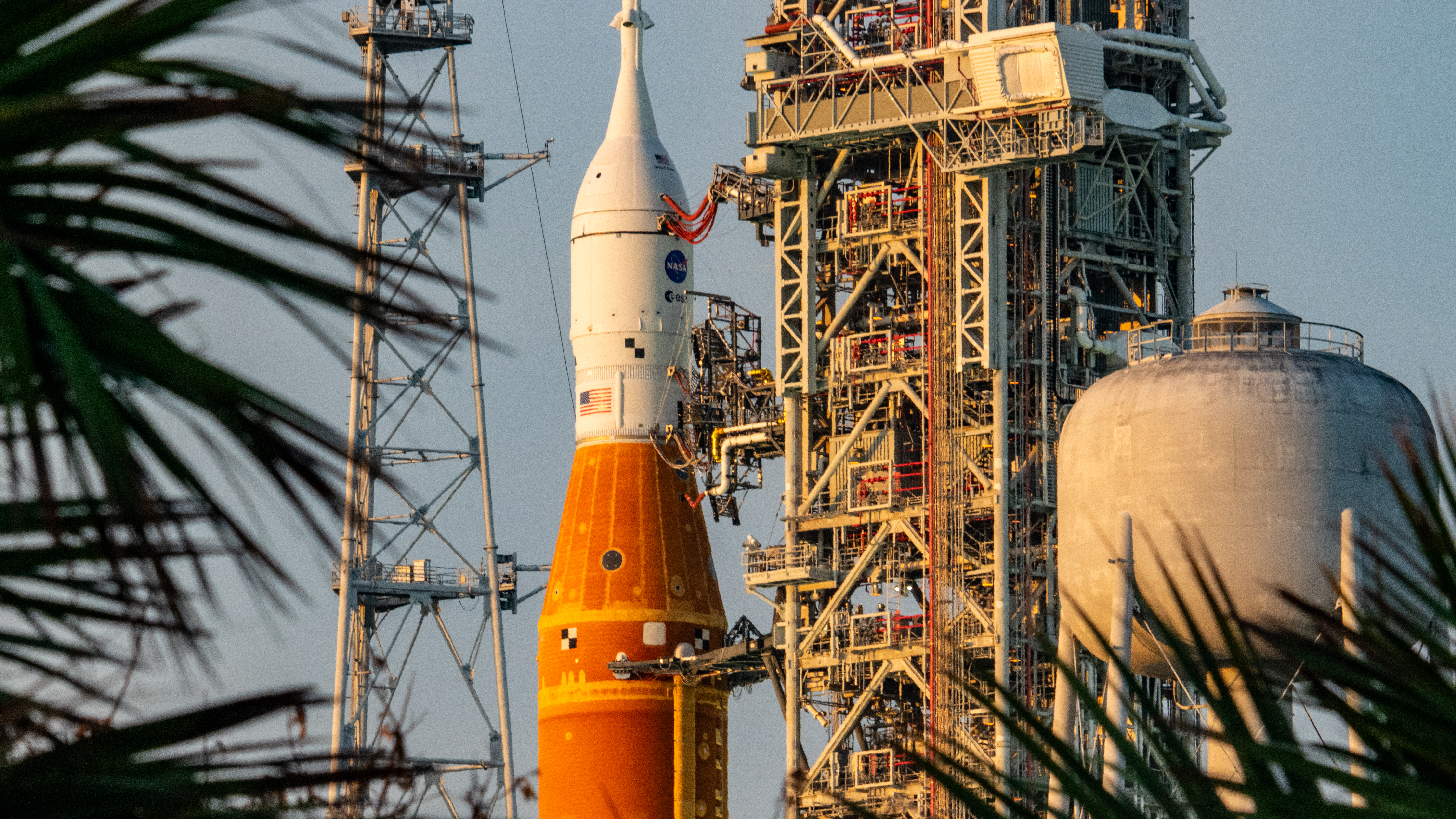SpaceX's Starlink satellites will soon get glare-reducing 'sunshades,' Elon Musk says

SpaceX's Starlink internet satellites will soon sport an accessory to tamp down their surprising brightness.
That brightness worries many astronomers, who say that the huge Starlink constellation could seriously disrupt a variety of scientific observations. And Starlink will indeed be huge, if all goes according to SpaceX's plan: The company has approval to launch 12,000 craft to low Earth orbit (LEO) and has applied for permission to loft 30,000 more. (For perspective, humanity has launched just 9,400 objects to orbit since the dawn of the space age in 1957).
SpaceX founder and CEO Elon Musk has said that the company will find a way to make Starlink craft fade from scientists' sight, predicting that the constellation will end up having no impact whatsoever on astronomical discoveries. SpaceX has been working with the astronomical community to help make this happen, researchers say, and the company has already tried out some mitigation measures.
Related: Starlink: SpaceX's satellite internet project
For example, one of the 60 Starlink satellites that launched atop a Falcon 9 rocket this past January sported an experimental coating to make it less reflective. Observations show that this "DarkSat" is considerably dimmer than its brighter Starlink cohorts, but probably not dim enough to quell most astronomers' concerns about the megaconstellation.
But SpaceX is taking additional measures as well, which brings us to the new accessory. Musk tweeted the following on Wednesday (April 22), in response to a Twitter follower who wished SpaceX luck on a 60-satellite Starlink launch that day: "Thanks! We are taking some key steps to reduce satellite brightness btw. Should be much less noticeable during orbit raise by changing solar panel angle & all sats get sunshades starting with launch 9."
He gave some details about the sunshades, which will presumably reduce solar reflection off the satellites' bodies, in a subsequent tweet that day: "It’s made of a special dark foam that’s extremely radio transparent, so as not to affect the phased array antennas. Looks a lot like a car sun visor."
Breaking space news, the latest updates on rocket launches, skywatching events and more!
Thanks! We are taking some key steps to reduce satellite brightness btw. Should be much less noticeable during orbit raise by changing solar panel angle & all sats get sunshades starting with launch 9.April 22, 2020
The sunshade-equipped satellites will begin flying soon, because Starlink Launch 9 should be just around the corner. Wednesday's liftoff was Launch 7, and Launch 8 is targeted for May.
Each Starlink mission lofts 60 spacecraft. To date, SpaceX has launched 422 of the satellites to LEO, counting two prototypes that went up in February 2018. Musk has said that Starlink can provide "minor" internet coverage with at least 400 satellites and "moderate" service with about 800, so the constellation will likely be operational relatively soon.
The sunshades' effectiveness should also be apparent in short order. Astronomers will doubtless be tracking the modified satellites, hoping they don't stand out too much against the dark sky.
- SpaceX's Starlink constellation could swell by 30,000 more satellites
- SpaceX's Starlink broadband service will begin in 2020: report
- 'Whoa, it worked': Elon Musk tweets via SpaceX's Starlink satellites
Mike Wall is the author of "Out There" (Grand Central Publishing, 2018; illustrated by Karl Tate), a book about the search for alien life. Follow him on Twitter @michaeldwall. Follow us on Twitter @Spacedotcom or Facebook.
OFFER: Save 45% on 'All About Space' 'How it Works' and 'All About History'!
For a limited time, you can take out a digital subscription to any of our best-selling science magazines for just $2.38 per month, or 45% off the standard price for the first three months.

Michael Wall is a Senior Space Writer with Space.com and joined the team in 2010. He primarily covers exoplanets, spaceflight and military space, but has been known to dabble in the space art beat. His book about the search for alien life, "Out There," was published on Nov. 13, 2018. Before becoming a science writer, Michael worked as a herpetologist and wildlife biologist. He has a Ph.D. in evolutionary biology from the University of Sydney, Australia, a bachelor's degree from the University of Arizona, and a graduate certificate in science writing from the University of California, Santa Cruz. To find out what his latest project is, you can follow Michael on Twitter.

